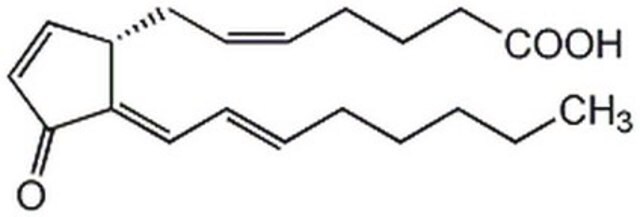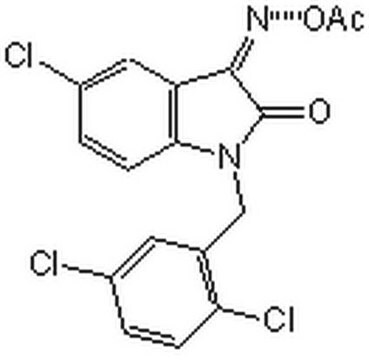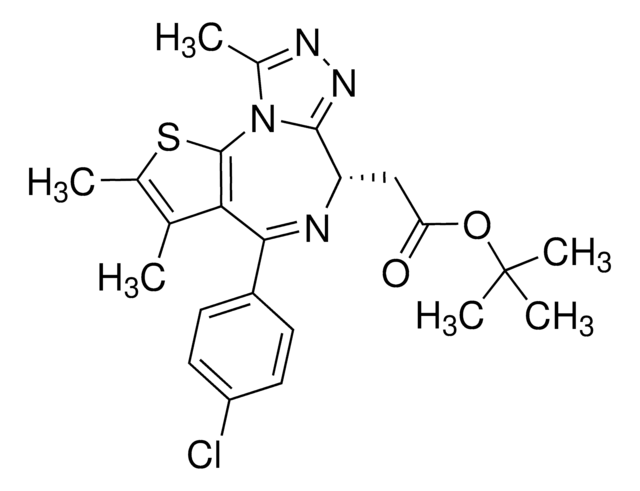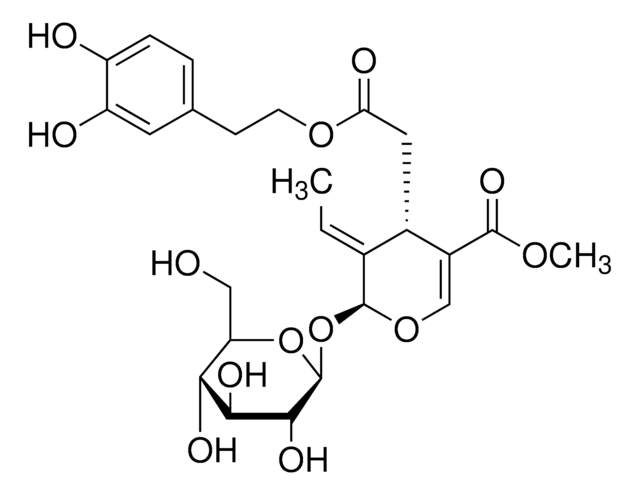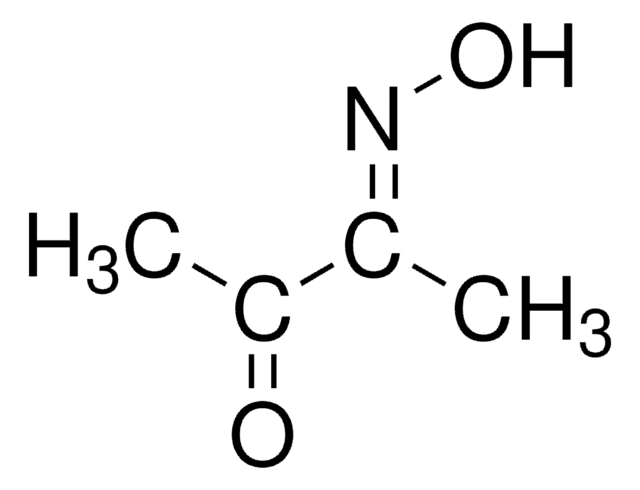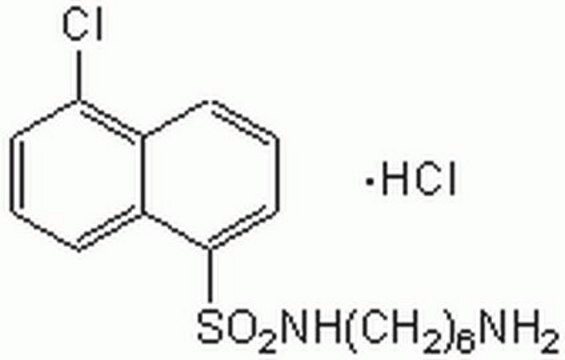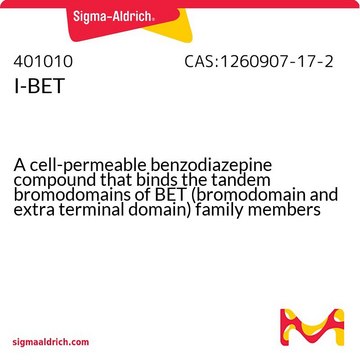Wichtige Dokumente
SML3742
GK13S
≥98% (HPLC)
Synonym(e):
(S)-1-Cyano-N-(1-(4-(pent-4-yn-1ylcarbamoyl)phenyl)-1H-imidazol-4-yl)pyrrolidine-3-carboxamide
About This Item
Empfohlene Produkte
Qualitätsniveau
Assay
≥98% (HPLC)
Form
powder
Farbe
white to beige
Löslichkeit
DMSO: 2 mg/mL, clear
Lagertemp.
-10 to -25°C
SMILES String
[n]2(cnc(c2)NC(=O)[C@@H]3CN(CC3)C#N)c1ccc(cc1)C(=O)NCCCC#C
InChI
1S/C21H22N6O2/c1-2-3-4-10-23-20(28)16-5-7-18(8-6-16)27-13-19(24-15-27)25-21(29)17-9-11-26(12-17)14-22/h1,5-8,13,15,17H,3-4,9-12H2,(H,23,28)(H,25,29)/t17-/m0/s1
InChIKey
LSHAYFDZIOIKII-KRWDZBQOSA-N
Biochem./physiol. Wirkung
GK13S is a cell penetrant, potent and non-toxic activity-based probe for deubiquitinase UCHL1. GK13S, but not GK16S, led to the reduction of monoubiquitin levels in the human glioblastoma cell line U-87 MG. GK13S together with GK16S comprises a set of chemogenomic probes for UCHL1, which is suitable for investigation of cellular functions of UCHL. GK13S also binds to PARK7, C21orf33, ISOC1 andNIT2.
Lagerklassenschlüssel
11 - Combustible Solids
WGK
WGK 3
Flammpunkt (°F)
Not applicable
Flammpunkt (°C)
Not applicable
Hier finden Sie alle aktuellen Versionen:
Analysenzertifikate (COA)
It looks like we've run into a problem, but you can still download Certificates of Analysis from our Dokumente section.
Wenn Sie Hilfe benötigen, wenden Sie sich bitte an Kundensupport
Besitzen Sie dieses Produkt bereits?
In der Dokumentenbibliothek finden Sie die Dokumentation zu den Produkten, die Sie kürzlich erworben haben.
Unser Team von Wissenschaftlern verfügt über Erfahrung in allen Forschungsbereichen einschließlich Life Science, Materialwissenschaften, chemischer Synthese, Chromatographie, Analytik und vielen mehr..
Setzen Sie sich mit dem technischen Dienst in Verbindung.